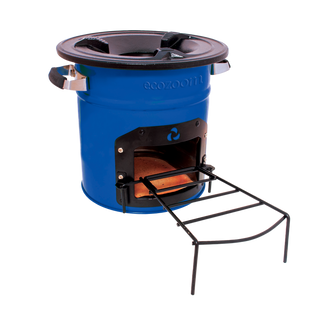Part three of BioLite’s Outdoors for the Indoors Series.
When was the last time you attended a class focused on scaling a mountain face or navigating rapids? For most of us, spending a class period outside on the quad during college was a one time thing. At the National Outdoor Leadership School (NOLS), class is held on the mountain or walking through the woods. Students embark on expeditions where they learn to rock climb, whitewater raft and lead through outdoor challenges. Instructors guide students through extreme scenarios daily so they can learn to remain calm under stress and make good decisions.
For the past 30 years, Marco Johnson has actively instructed wilderness education courses while recruiting and training NOLS field staff worldwide. We sat down with Marco to learn how he teaches students to thrive in off grid situations and how we can keep our cool when faced with an indoor emergency. Here are his top three tips:
1. Don’t panic.

Photo Credit: Christensen
"Mark Twain once said, courage is not the absence of fear, it is the ability to control it. When faced with an emergency survival situation, don’t panic," says Marco. "Panicking affects your ability to think critically and exercise good judgement (and good judgement in an uncertain situation is your best friend). Make sure that you remember to remain as calm and project calmness to those around you. One of the ways to become as calm as possible is to take a deep breath and think about what is truly happening vs. what you think is happening. We are human beings and a lot of times we tend to react emotionally but it is very powerful to recognize the difference between perceived and real risk."
Indoor translation: You could have the best gear in the world and a solid plan, but if you lose your cool, it won’t mean anything. Here are few tools that can help:
- Pause and take a deep breath. Hold that breath for 3 seconds, let the breath out and repeat.
- Keep perspective. Take a step back and look around to see what is actually happening (vs. what you think is happening). This will help you determine what the real dangers are so that you can make a game plan.
- Distract yourself. Ask a friend to tell you a story, give yourself a small project or establish a new routine to get your mind off the stress.
2. Create specific plans so that you are prepared for whatever comes your way.

Photo Credit: Mara Gans

Photo Credit: NOLS
"Instilling in people the ability to exercise judgement so they can evaluate risks, their abilities and make a good decision, is applicable across the board from outdoor to indoor survival situations. On NOLS expeditions, students see instructors mapping out daily hiking routes, pointing out potential hazards and discussing ways to mitigate them. Instructors debrief situations often so that everyone can reflect on what occurred. The goal is to provide students with enough prep that if they come across something unfamiliar, they have the appropriate judgment to say, ‘I don’t know how to approach this therefore I am going to do something different.’ Prior planning is great, it forces you to think about different situations so that when challenges come up, you know how to handle them."
Indoor translation: Plan for the most common emergencies or natural disasters that your region faces.
- Make a plan. Cover all of your bases so you know the supplies, shelter, and transportation you’ll need (and what happens if you don’t have access to them).
- Practice. Review the plans with your family, pose a variety of scenarios and run through them together.
- Reflect. After practicing a plan, ask your family how you could do better next time so that you are constantly focusing on improving judgement.
3. When you can’t plan, know how to assess the situation.

"Whether you’re in a backcountry or emergency context, this graphic can help you judge the risk of a situation. Ideally, you want avoid the high likelihood and high severity area. For example, if I’m standing on the edge of a 500 foot icy drop off, the likelihood is pretty high that I would fall and if I fall it is a permanent consequence. So that is probably something I should not do. The area in between is grey and the more you practice navigating it with this thinking, the more habitual it will become. For example, if I’m walking along a trail above a field of boulders and it’s a straight drop 30 feet below but the trail is 5 feet wide, it’s a very low likelihood of me falling, but if I fell it would be high consequence. I have to decide as an individual, leader of a group or family member how I feel about that risk equation. This has great carryover in terms of a natural disaster. Think of the fires going on in the West. There aren’t evacuation orders for everyone but there are significant hazards so you need to think, what is the likelihood of something happening and what is the consequence? Should I pack my family up and leave now or should I pack up our belongings into one area and wait for more instructions?"
Indoor translation: During indoor emergencies there is a lot of grey area when it comes to decision making. Here are a few things to consider before making tough decisions:
- Know your abilities. Discuss how your particular strengths and weaknesses fit into your family's plan.
- Assign roles to different family members based on their abilities. Whether it is calling for help, establishing the game plan or gathering supplies, make this part of the preparedness plan.
- Make good judgement a habit. Picture the graphic above while making decisions in your day to day life, the more often you use this thinking, the more habitual it will become.
NOLS turns 50 this October! If you are interested in taking a course, visit their site today.











